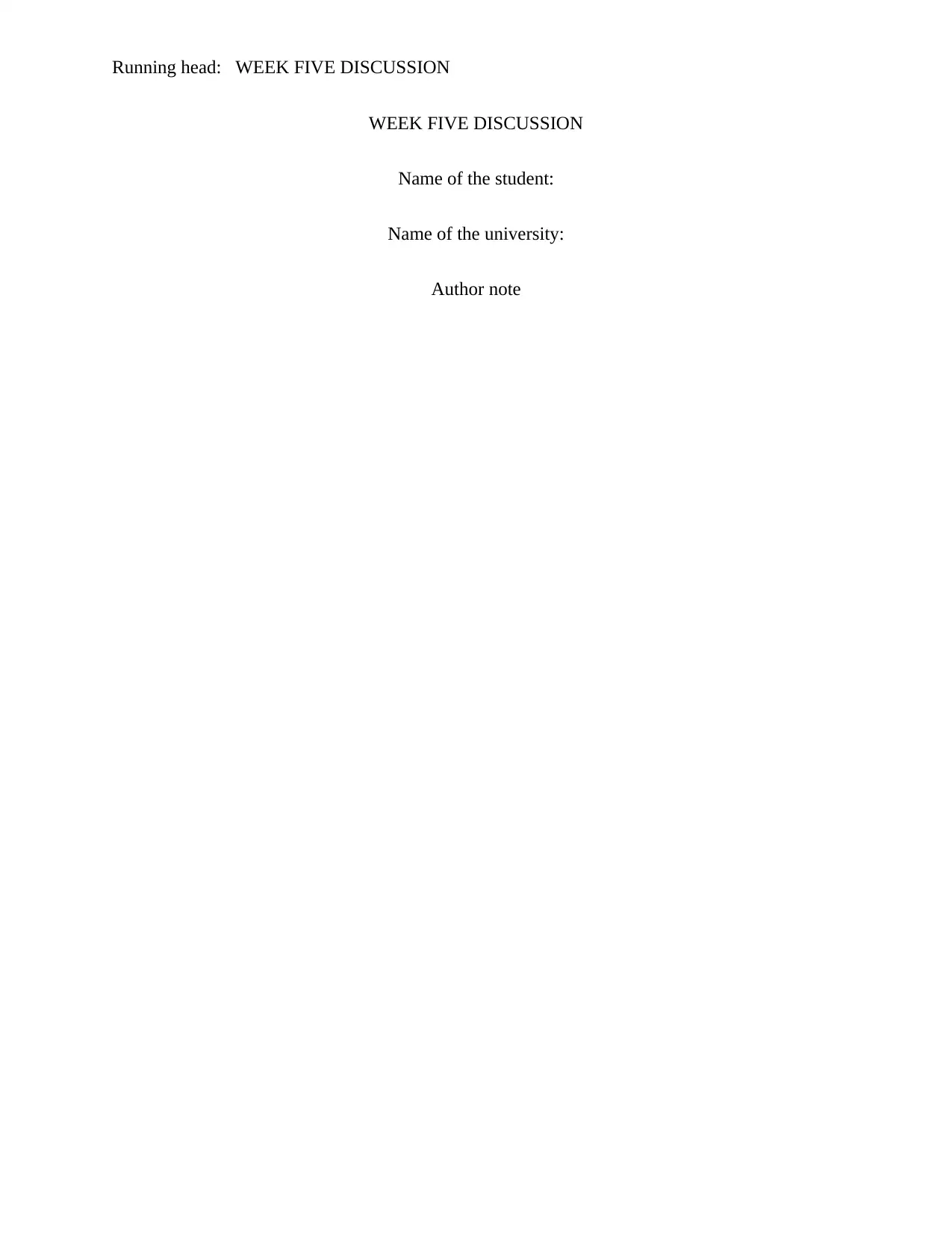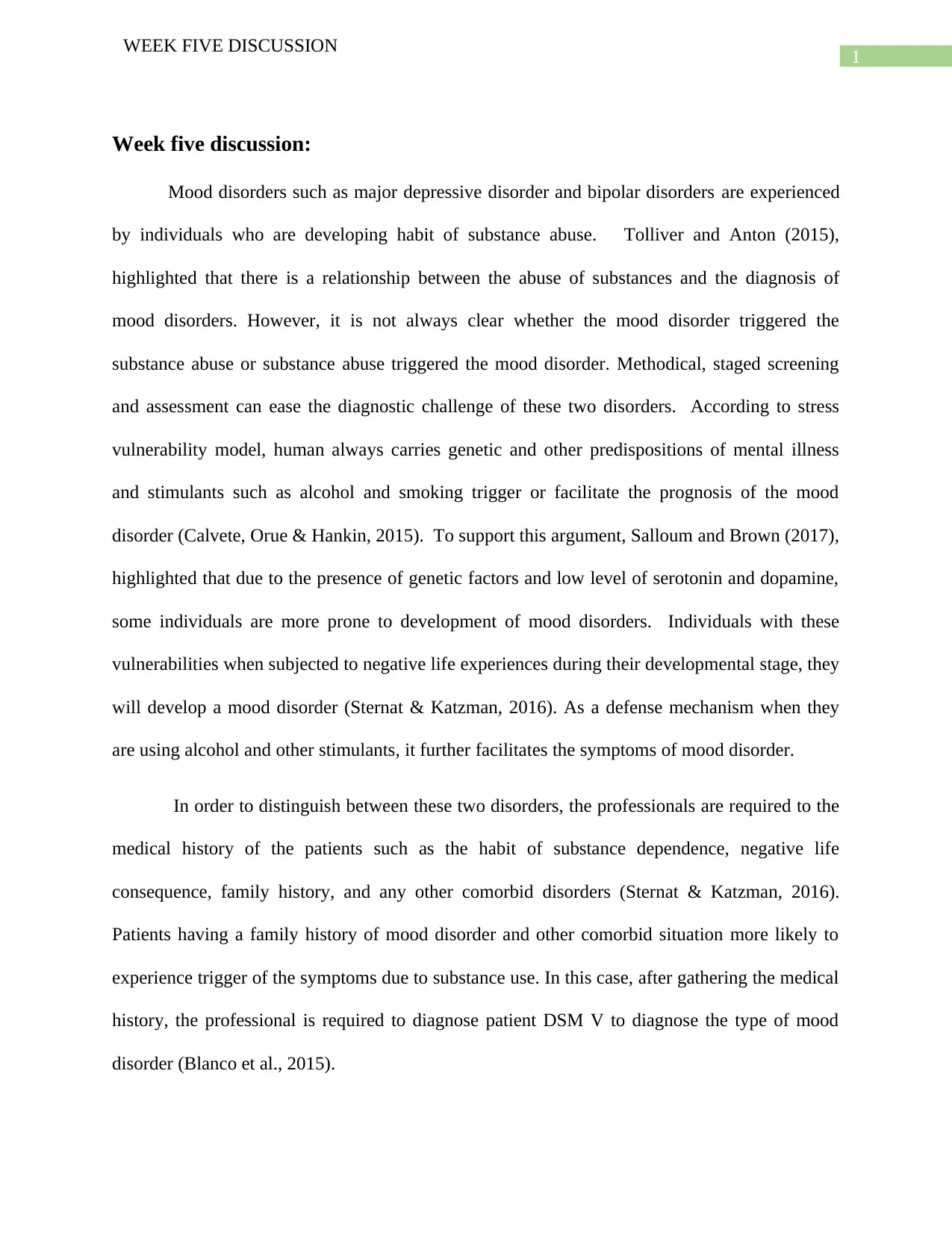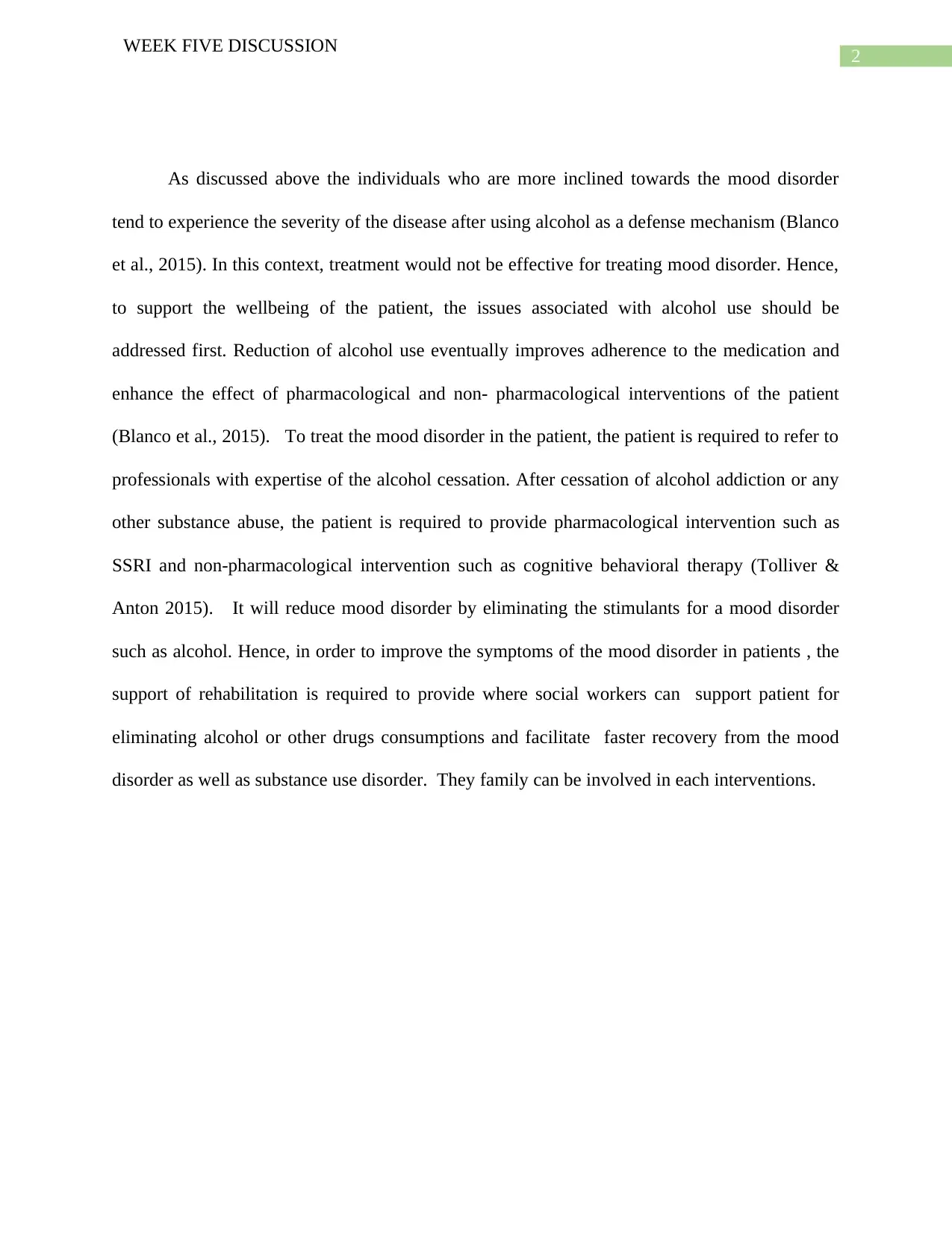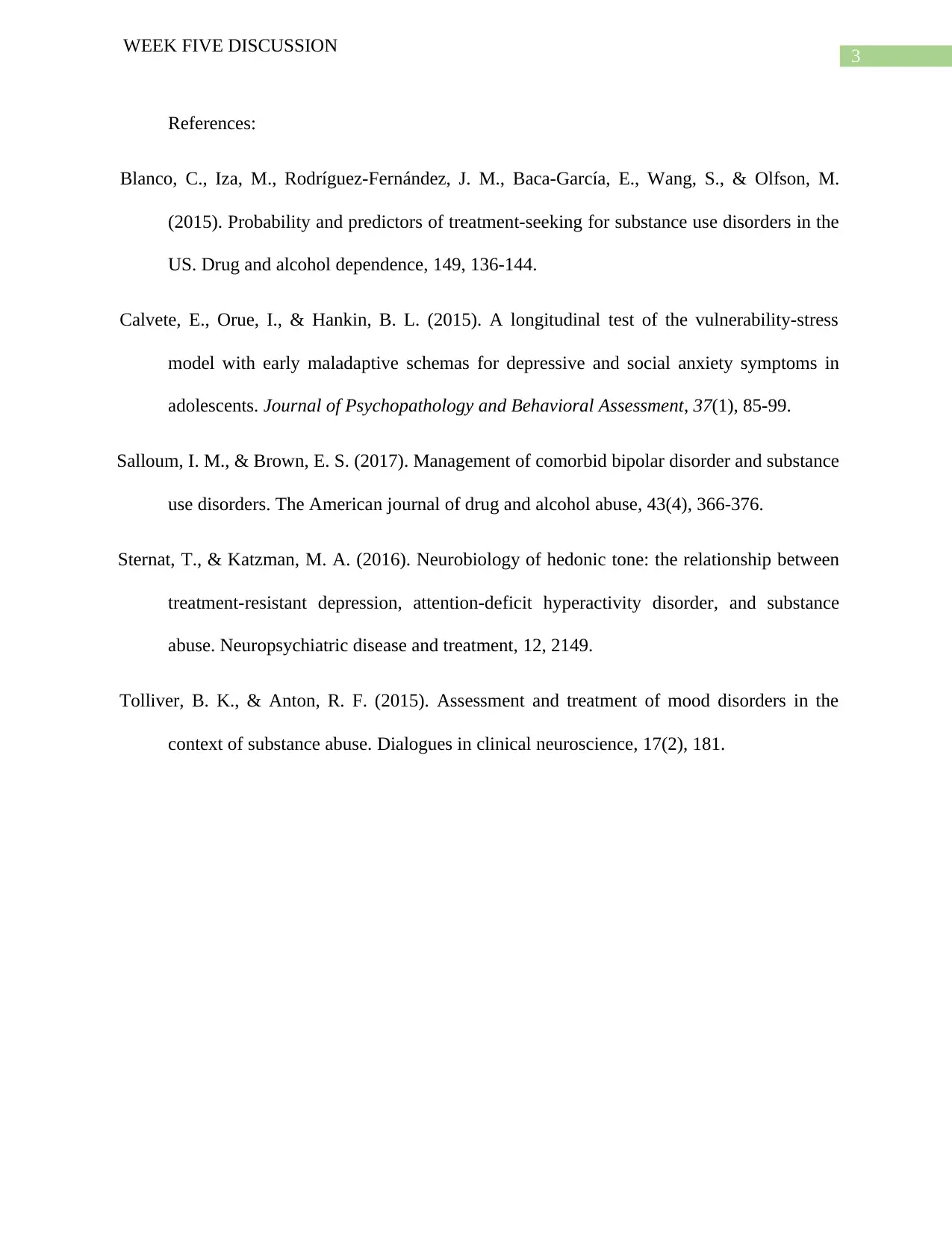University Discussion: Mood Disorders and Substance Abuse Treatment
VerifiedAdded on 2022/12/22
|4
|827
|57
Discussion Board Post
AI Summary
This discussion post examines the relationship between mood disorders, such as major depressive disorder and bipolar disorder, and substance abuse. It highlights the challenges in diagnosing these co-occurring conditions and discusses the stress vulnerability model, which suggests genetic and environmental factors contribute to the development of these disorders. The post emphasizes the importance of thorough screening and assessment, including gathering patient medical history and utilizing the DSM V for diagnosis. It argues that addressing substance abuse, particularly alcohol, is crucial before treating the mood disorder, as substance use can exacerbate symptoms. Treatment approaches discussed include pharmacological interventions like SSRIs and non-pharmacological interventions such as cognitive behavioral therapy, with a strong emphasis on the role of rehabilitation and support from social workers and family involvement for effective recovery. The post references several studies to support its arguments.
1 out of 4











![[object Object]](/_next/static/media/star-bottom.7253800d.svg)